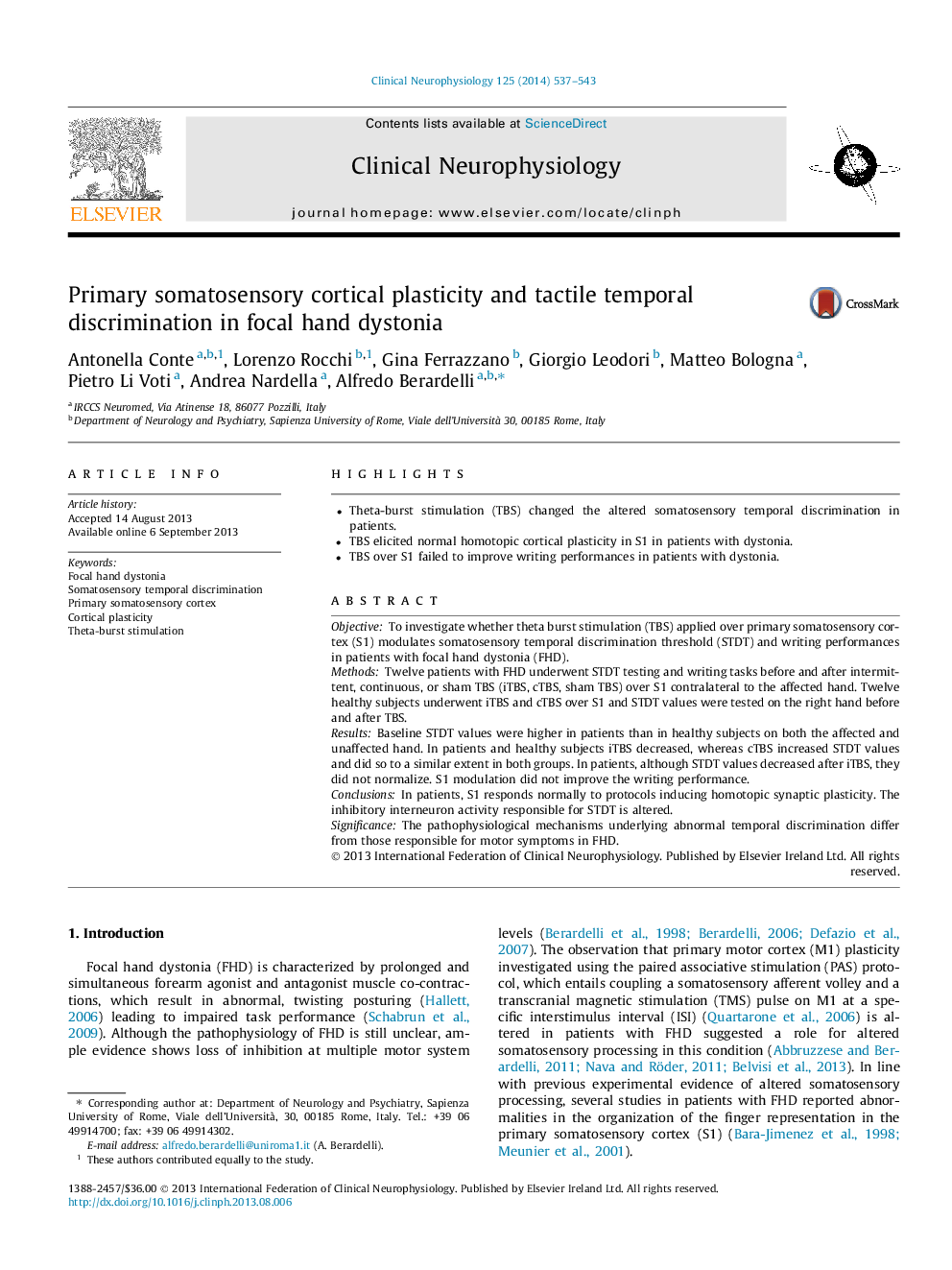| Article ID | Journal | Published Year | Pages | File Type |
|---|---|---|---|---|
| 3043943 | Clinical Neurophysiology | 2014 | 7 Pages |
•Theta-burst stimulation (TBS) changed the altered somatosensory temporal discrimination in patients.•TBS elicited normal homotopic cortical plasticity in S1 in patients with dystonia.•TBS over S1 failed to improve writing performances in patients with dystonia.
ObjectiveTo investigate whether theta burst stimulation (TBS) applied over primary somatosensory cortex (S1) modulates somatosensory temporal discrimination threshold (STDT) and writing performances in patients with focal hand dystonia (FHD).MethodsTwelve patients with FHD underwent STDT testing and writing tasks before and after intermittent, continuous, or sham TBS (iTBS, cTBS, sham TBS) over S1 contralateral to the affected hand. Twelve healthy subjects underwent iTBS and cTBS over S1 and STDT values were tested on the right hand before and after TBS.ResultsBaseline STDT values were higher in patients than in healthy subjects on both the affected and unaffected hand. In patients and healthy subjects iTBS decreased, whereas cTBS increased STDT values and did so to a similar extent in both groups. In patients, although STDT values decreased after iTBS, they did not normalize. S1 modulation did not improve the writing performance.ConclusionsIn patients, S1 responds normally to protocols inducing homotopic synaptic plasticity. The inhibitory interneuron activity responsible for STDT is altered.SignificanceThe pathophysiological mechanisms underlying abnormal temporal discrimination differ from those responsible for motor symptoms in FHD.
